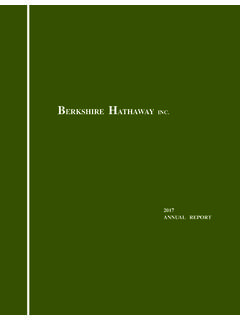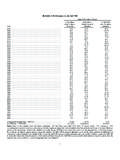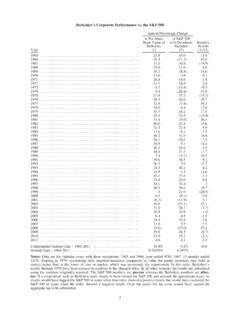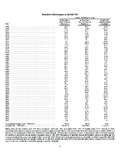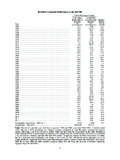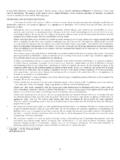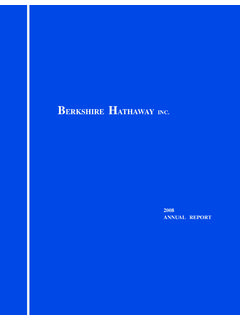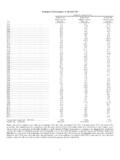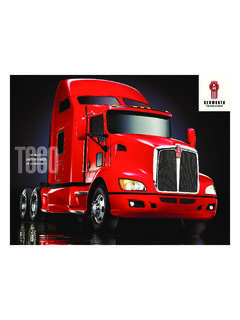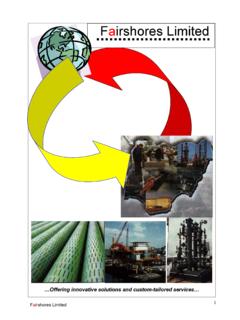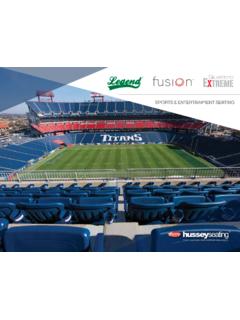Transcription of Note: The following table appears in the printed …
1 2 Note: The following table appears in the printed Annual Report on the facing page of theChairman's letter and is referred to in that s Corporate Performance vs. the S&P 500 Annual Percentage Change in Per-Sharein S&P 500 Book Value ofwith DividendsRelativeBerkshireIncludedResult sYear (1) (2) (1)-(2) ( ) ( ) ( ) ( ) ( ) ( ) ( ) ( ) ( ) ( ) ( ) ( ) Annual Gain Gain 1964-2000207,821%5,383%202,438%Notes:Dat a are for calendar years with these exceptions: 1965 and 1966, year ended 9/30; 1967, 15 months ended 12 in 1979, accounting rules required insurance companies to value the equity securities they hold at marketrather than at the lower of cost or market, which was previously the requirement.
2 In this table , Berkshire's resultsthrough 1978 have been restated to conform to the changed rules. In all other respects, the results are calculatedusing the numbers originally S&P 500 numbers are pre-tax whereas the Berkshire numbers are after-tax. If a corporation such as Berkshirewere simply to have owned the S&P 500 and accrued the appropriate taxes, its results would have lagged the S&P500 in years when that index showed a positive return, but would have exceeded the S&P in years when the indexshowed a negative return. Over the years, the tax costs would have caused the aggregate lag to be HATHAWAY the Shareholders of Berkshire Hathaway Inc.:Our gain in net worth during 2000 was $ billion, which increased the per-share book value of bothour Class A and Class B stock by Over the last 36 years (that is, since present management took over) per-share book value has grown from $19 to $40,442, a gain of compounded annually.
3 Overall, we had a decent year, our book-value gain having outpaced the performance of the S&P , though this judgment is necessarily subjective, we believe Berkshire s gain in per-share intrinsic valuemoderately exceeded its gain in book value. (Intrinsic value, as well as other key investment and accounting termsand concepts, are explained in our Owner s Manual on pages 59-66. Intrinsic value is discussed on page 64.)Furthermore, we completed two significant acquisitions that we negotiated in 1999 and initiated six told, these purchases have cost us about $8 billion, with 97% of that amount paid in cash and 3% in stock. Theeight businesses we ve acquired have aggregate sales of about $13 billion and employ 58,000 people. Still, weincurred no debt in making these purchases, and our shares outstanding have increased only 1/3 of 1%.
4 Better yet,we remain awash in liquid assets and are both eager and ready for even larger will detail our purchases in the next section of the report. But I will tell you now that we have embracedthe 21st century by entering such cutting-edge industries as brick, carpet, insulation and paint. Try to control the minus side, policyholder growth at GEICO slowed to a halt as the year progressed. It has becomemuch more expensive to obtain new business. I told you last year that we would get our money s worth fromstepped-up advertising at GEICO in 2000, but I was wrong. We ll examine the reasons later in the negative which has persisted for several years is that we see our equity portfolio as onlymildly attractive. We own stocks of some excellent businesses, but most of our holdings are fully priced and areunlikely to deliver more than moderate returns in the future.
5 We re not alone in facing this problem: The long-term prospect for equities in general is far from , there is the negative that recurs annually: Charlie Munger, Berkshire s Vice Chairman and mypartner, and I are a year older than when we last reported to you. Mitigating this adverse development is theindisputable fact that the age of your top managers is increasing at a considerably lower rate percentage-wise than is the case at almost all other major corporations. Better yet, this differential will widen in the and I continue to aim at increasing Berkshire s per-share value at a rate that, over time, willmodestly exceed the gain from owning the S&P 500. As the table on the facing page shows, a small annualadvantage in our favor can, if sustained, produce an anything-but-small long-term advantage.
6 To reach our goalwe will need to add a few good businesses to Berkshire s stable each year, have the businesses we own generallygain in value, and avoid any material increase in our outstanding shares. We are confident about meeting the lasttwo objectives; the first will require some s appropriate here to thank two groups that made my job both easy and fun last year just as they doevery year. First, our operating managers continue to run their businesses in splendid fashion, which allows me tospend my time allocating capital rather than supervising them. (I wouldn t be good at that anyway.) All figures used in this report apply to Berkshire's A shares, the successor to the only stock that thecompany had outstanding before 1996.
7 The B shares have an economic interest equal to 1/30th that of the managers are a very special breed. At most large companies, the truly talented divisional managersseldom have the job they really want. Instead they yearn to become CEOs, either at their present employer orelsewhere. Indeed, if they stay put, they and their colleagues are likely to feel they have Berkshire, our all-stars have exactly the jobs they want, ones that they hope and expect to keepthroughout their business lifetimes. They therefore concentrate solely on maximizing the long-term value of thebusinesses that they own and love. If the businesses succeed, they have succeeded. And they stick with us: Inour last 36 years, Berkshire has never had a manager of a significant subsidiary voluntarily leave to join other group to which I owe enormous thanks is the home-office staff.
8 After the eight acquisitionsmore than doubled our worldwide workforce to about 112,000, Charlie and I went soft last year and added onemore person at headquarters. (Charlie, bless him, never lets me forget Ben Franklin s advice: A small leak cansink a great ship. ) Now we have tiny band works miracles. In 2000 it handled all of the details connected with our eight acquisitions,processed extensive regulatory and tax filings (our tax return covers 4,896 pages), smoothly produced an annualmeeting to which 25,000 tickets were issued, and accurately dispensed checks to 3,660 charities designated by ourshareholders. In addition, the group dealt with all the routine tasks served up by a company with a revenue run-rate of $40 billion and more than 300,000 owners.
9 And, to add to all of this, the other are a delight to should pay to have my of 2000 Our acquisition technique at Berkshire is simplicity itself: We answer the phone. I m also glad to reportthat it rings a bit more often now, because owners and/or managers increasingly wish to join their companies withBerkshire. Our acquisition criteria are set forth on page 23, and the number to call is me tell you a bit about the businesses we have purchased during the past 14 months, starting with thetwo transactions that were initiated in 1999, but closed in 2000. (This list excludes some smaller purchases thatwere made by the managers of our subsidiaries and that, in most cases, will be integrated into their operations.) I described the first purchase 76% of MidAmerican Energy in last year s report.
10 Becauseof regulatory constraints on our voting privileges, we perform only a one-line consolidation ofMidAmerican s earnings and equity in our financial statements. If we instead fully consolidatedthe company s figures, our revenues in 2000 would have been $5 billion greater than wereported, though net income would remain the same. On November 23, 1999, I received a one-page fax from Bruce Cort that appended a WashingtonPost article describing an aborted buyout of CORT Business Services. Despite his name, Brucehas no connection with CORT. Rather, he is an airplane broker who had sold Berkshire a jet in1986 and who, before the fax, had not been in touch with me for about ten knew nothing about CORT, but I immediately printed out its SEC filings and liked what I same day I told Bruce I had a possible interest and asked him to arrange a meeting withPaul Arnold, CORT s CEO.

